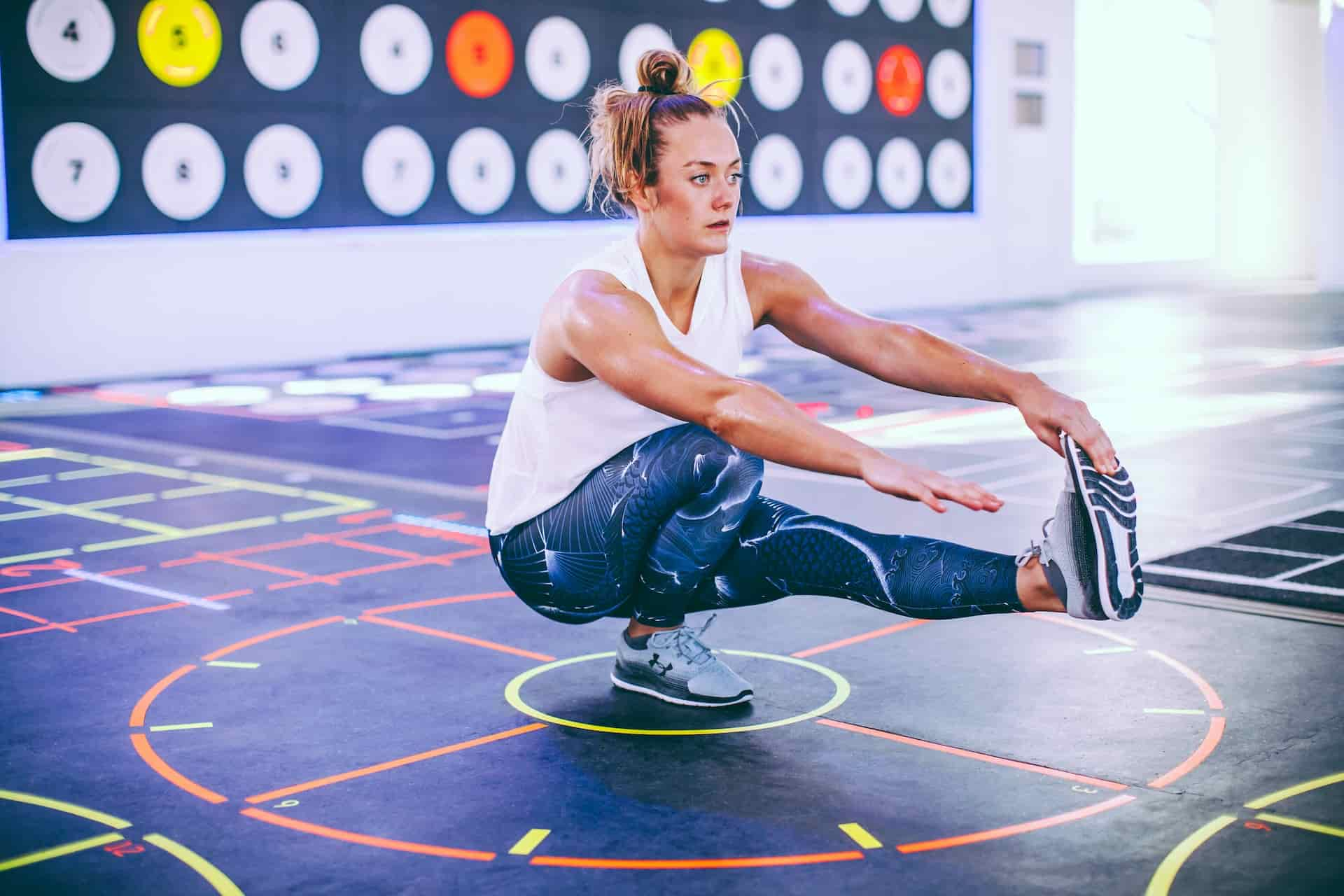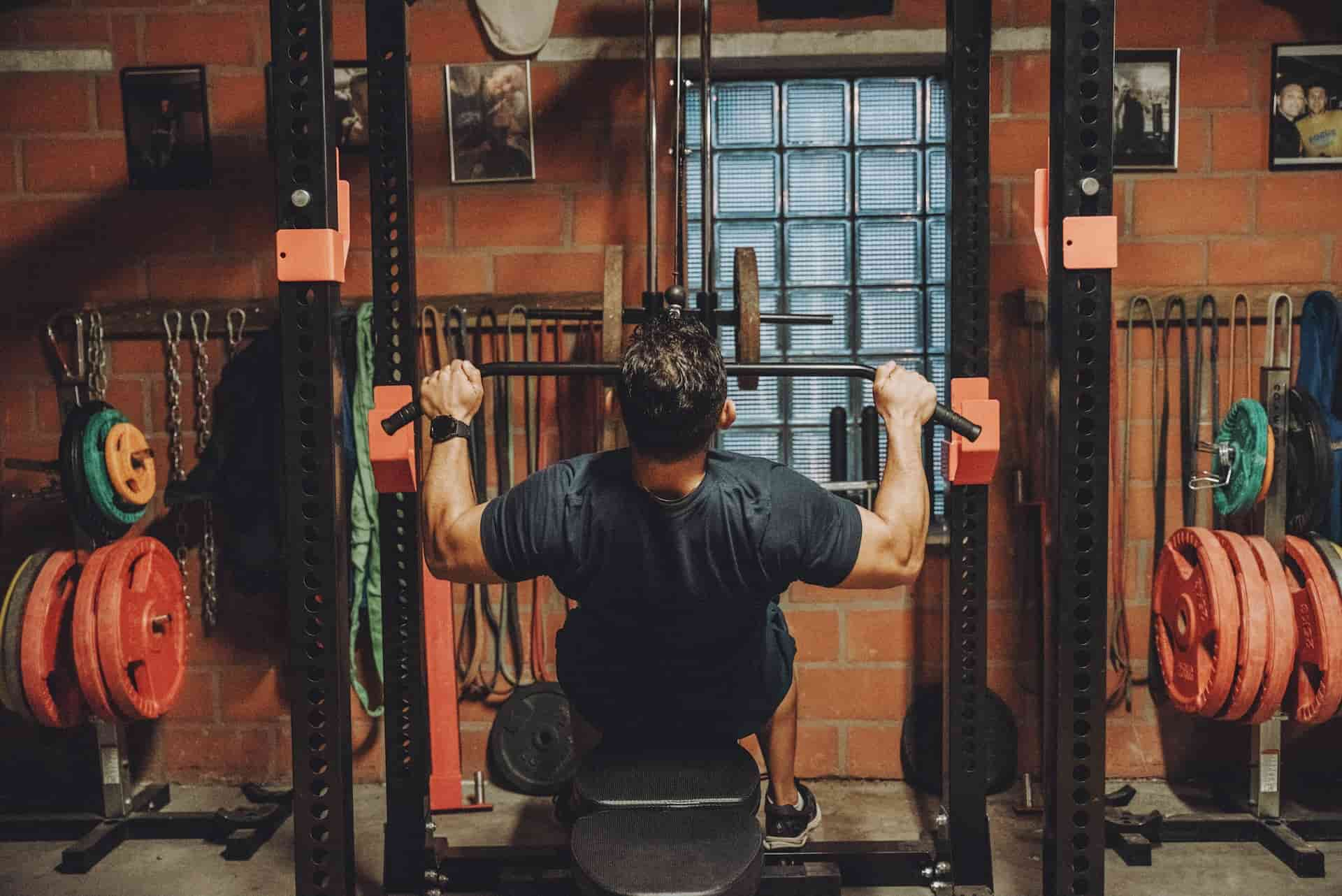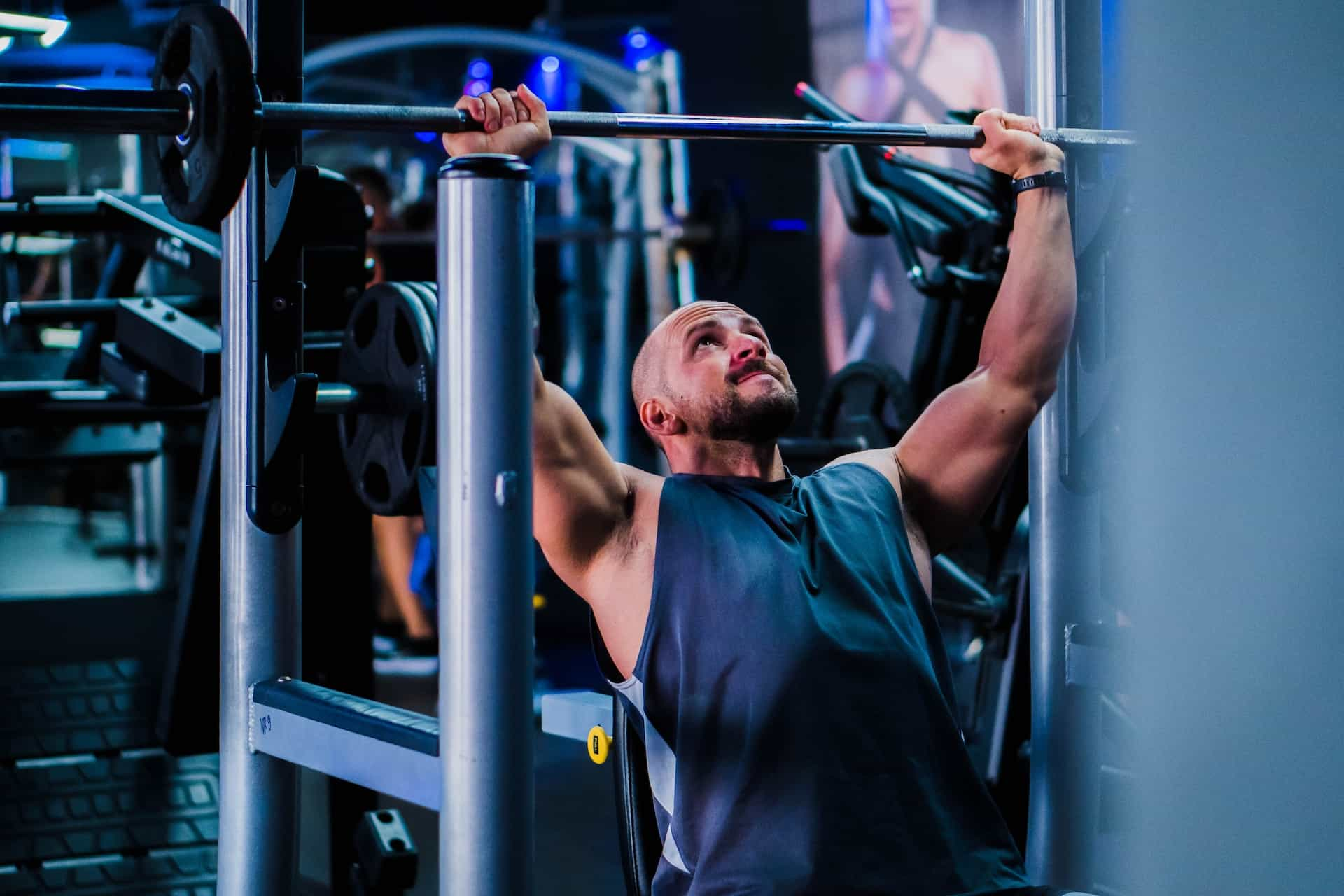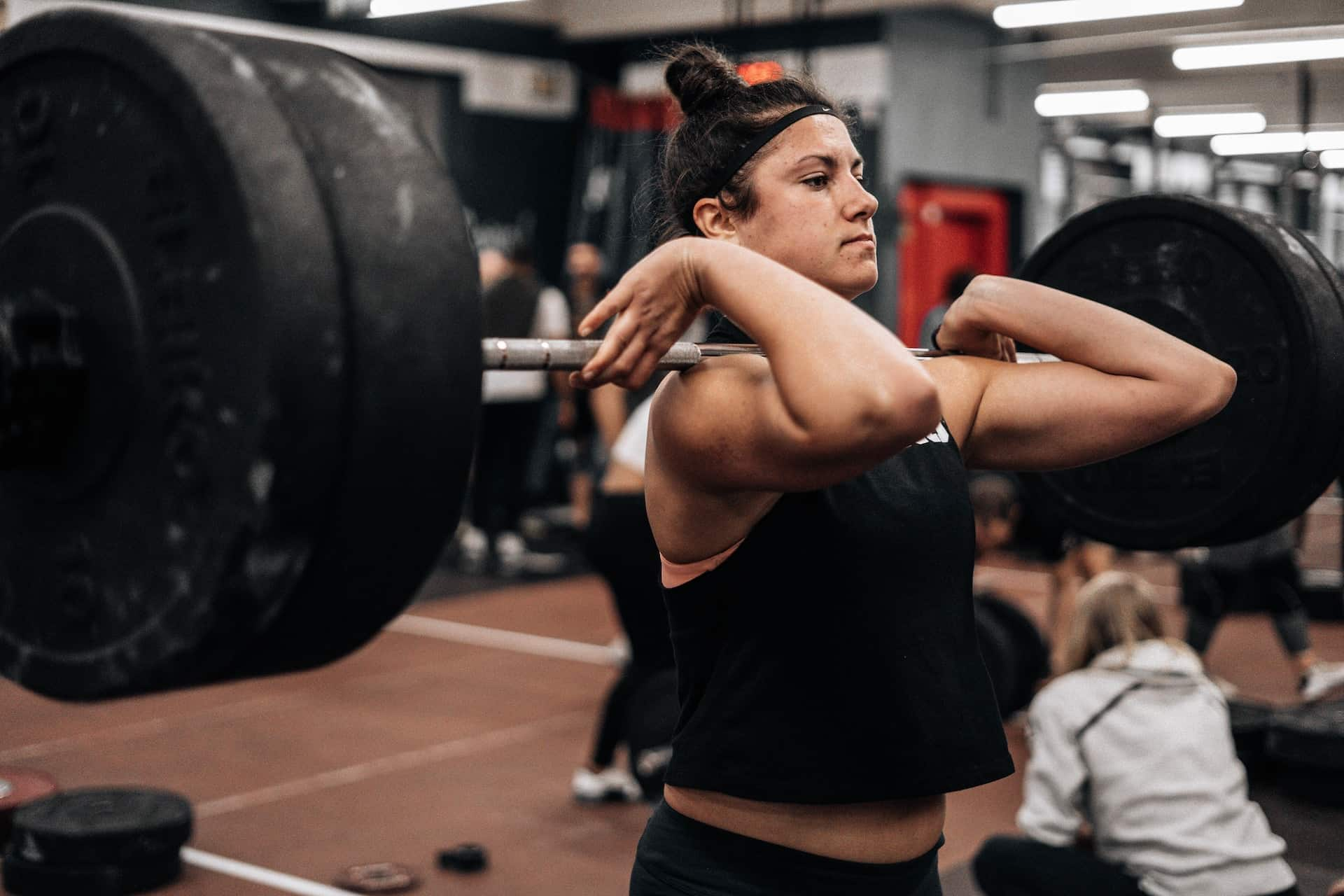2 de November de 2023
The importance of Full Range of Motion for your training
What’s Range Of Movement?

The range of motion can be technically defined as the degree of movement that occurs in a joint during the execution of an exercise (Haff, 2016). Range of motion plays a vital role in the muscular adaptations that occur in response to training: muscular strength, sports performance, and muscle hypertrophy (Kassiano et al., 2023; Newmire & Willoughby, 2018; Schoenfeld & Grgic, 2020). Depending on the range of motion used, factors such as muscle activation and biomechanical aspects will be affected differently. Just as we need to consider variables like intensity, volume, or frequency in strength training prescriptions, we shouldn’t forget the importance of the full range of motion.
Full Range of Motion vs. Partial Range of Motion
The full range of motion is described as performing a dynamic exercise without any limitations on the degrees of movement (Haff, 2016). On the flip side, if there are limitations on the degrees of movement during the exercise, it’s referred to as partial range of motion. Many researchers have compared how full range of motion versus partial range of motion affects muscular adaptations (Kassiano et al., 2023).
In everyday practice, you can adjust the range of motion by altering your body position or grip width, using external materials like safety bars or wooden boards, or voluntarily reducing the degree of movement at the start or end of the exercise (Pallarés et al., 2021). If you perform a movement without any of these limitations in the execution degrees, you’re achieving a full range of motion. Changing your posture, like arching your back during the bench press, or using boards between your chest and the bar, or not fully extending your arms and touching the bar to your chest, will result in a partial range of motion.
Therefore, resistance training without restrictions on the degree of movement is commonly defined as “full range of motion,” while training that involves any reduction in movement is considered “partial range of motion” (Hartmann et al., 2013). The importance of range of motion is such that two strength training programs performed with full range of motion or partial range of motion could lead to different long-term neuromuscular, functional, and structural adaptations, even when all other training variables (e.g., relative intensity, volume, recovery) match (Pallarés et al., 2021).
Importance of Full Range of Motion Training for Building Muscle Strength and Enhancing Functional Performance

A Recent Meta-Analysis Confirms the Superiority of Full Range of Motion Training for Muscle Strength Gains
A recent meta-analysis found that training with a full range of motion significantly outperformed partial range of motion in terms of muscle strength gains (Pallarés et al., 2021). These results demonstrate that strength training with a full range of motion is more effective than partial range of motion in developing significantly more muscle strength and functional performance.
One of the reasons full range of motion achieves superior adaptations compared to partial range is that in each repetition, we pass through the zone of maximum tension, or the sticking point. Partial range constantly avoids these degrees of maximum tension, making it less effective for building strength compared to full range of motion (Martínez-Cava et al., 2022).
Full Range of Motion and Functional Performance
Some strength and conditioning coaches have suggested a partial range of motion as a more interesting strategy for working muscles in the specific degrees of sports performance. This phenomenon is known as the specificity of the movement. A clear example of defending a partial range for working the specificity of the movement is that if we don’t need to perform a deep squat to jump, why train a deep squat? Moreover, by using a partial range in exercises like squats, you can lift more weight. As a result, these coaches also argue that greater adaptations can occur with a heavier load.
However, the majority of scientific literature confirms superior neuromuscular adaptations with a full range of motion, both in the specific part of the movement and in the rest of the degrees of motion (Pallarés et al., 2021). Full range of motion has proven to be more effective than partial range in increasing jump capacity and sprint performance. Currently, there is some controversy in the results regarding functional performance, as there are studies supporting both full and partial range of motion. Thus, future research is needed to confirm their stance towards one or the other option.
An essential point to consider that may lead you to favor full range of motion is that lifting more weight with a partial range is not always a good idea. The clearest example is seen with a partial squat to which we add more weight than we could handle with a deep squat. Imagine that on the third repetition, your athlete goes a bit lower than intended, and since the weight is designed for a partial range, they may end up on the ground with the bar. Using the excuse of a partial range of motion to add more weight often ends in an accident at some point.
The Importance of Training with a Full Range of Motion for Building Muscle Mass

The results of studies comparing a full range of motion versus a partial range of motion show conflicting findings regarding muscle hypertrophy (Kassiano et al., 2022; Pallarés et al., 2021). One of the most cited publications concludes that full range of motion executions lead to superior hypertrophy compared to partial range of motion, especially in the lower extremities (Schoenfeld & Grgic, 2020). In a similar vein, a more recent systematic review found that strength training with a full range of motion is more effective than partial range of motion in improving muscle hypertrophy, emphasizing once again the importance of completing the entire range of motion in leg exercises (Pallarés et al., 2021).
Some research clearly favors full range of motion when it comes to increasing muscle mass compared to partial range. However, there’s a common error that often appears in older publications: the chosen partial range of motion. Stretch-induced hypertrophy is a mechanism that occurs when the muscle is in maximum stretch and contracts (Warneke et al., 2023). It’s proven that this part of the movement, which can be the initial, middle, or final part of an exercise, is the most important for promoting muscle hypertrophy (Hinks et al., 2022).
To visualize this more easily, imagine you’re doing dumbbell flyes for your chest. The full range of motion goes from when the dumbbells touch in front of your chest to when your arms open as wide as possible. In that part of the exercise, your chest is in maximum stretch, and it’s the most critical range of motion in that exercise. If a study compares the full range of motion of this exercise (dumbbell flyes) with a partial range at the beginning of the exercise (dumbbells together until you slightly separate the arms), the full range of motion will be the clear winner. However, if we make the same comparison, but the partial range is in that maximum stretch zone, the results change radically, potentially becoming equal to or even surpassing those obtained with full range of motion.
There is research that has compared a partial range of motion at the point of maximum stretch with a full range of motion, yielding similar or even greater results in favor of the partial range (Pedrosa et al., 2022). Likewise, other studies have compared different partial ranges of motion of an exercise to determine which degrees are most beneficial, always favoring the point where the muscle is most stretched. For example, when performing a bicep curl on a Scott bench, the most critical degrees are when the elbow is fully extended, meaning the elbows are at a 180-degree angle. In this exercise, the middle part (elbows at around 90 degrees) and the final part (elbows nearly fully flexed) contribute much less than that partial range with fully extended elbows (Sato et al., 2021).
How To Apply Range of Motion To Gain Muscle Mass
Performing deep squats with a full range of motion rather than partial range of motion is more likely to lead to greater muscle growth (Yoshiko & Watanabe, 2021). There are two primary reasons for this: a full range of motion stimulates more muscle fibers than a partial range of motion, and a full range of motion engages muscle groups like the quadriceps and glutes when the muscle is fully stretched.
Therefore, if the goal is to gain muscle mass, it’s advisable to use a full range of motion to ensure that you stimulate the muscle across all degrees. In the case of performing partial reps for some reason, choose the degrees where the muscle is stretched, not contracted, because that will make the difference in muscle mass development. Identifying where this partial range of motion is located is straightforward—just perform an exercise and feel where the muscle stretches the most. In a Romanian deadlift, for instance, a full range of motion will ensure you stimulate your hamstrings and glutes throughout the movement, but the most critical degrees are when the load is close to the ground, which is the point of maximum stretch for these muscle groups.
Specific & Isolated Cases Where Limiting The ROM Can Be Beneficial

So far, it’s clear that full range of motion has proven to be superior in a majority of research. Therefore, why risk strength and functional performance adaptations with partial movements when we can secure the benefits with a full range of motion? There are unique scenarios where a partial range may be more interesting than a full range of motion. An example of this is the female physical fitness test for the National Police Force, where candidates must hang from a bar with their chin above it for the maximum time.
In such specific cases, our recommendation, based on all existing scientific literature, is to work with a full range of motion to increase overall strength, reserving training volume for the specific test in which you will work only on the degrees needed to pass the fitness test. The reason is that there is evidence supporting strength improvement in degrees adjacent to the training angle, but as we’ve already discussed, it all depends on your specific goal. Except for rare exceptions like the one described in this section, you’ll typically use various and random ranges of motion.
The same applies to hypertrophy if you are an advanced bodybuilder or working with them. These athletes need to achieve perfect symmetry. Regional hypertrophy is possible, meaning you can develop the upper chest more than the lower, although you can’t stimulate one without the other. There are different ways to emphasize one muscle group or another, as well as one area or another, although it’s complex. Imagine you want to develop your glutes more than your quadriceps or hamstrings. You can use a partial range of motion in hip thrusts because the final part of the movement is what interests us to contract the glutes to the maximum. In squats, we’re more interested in the deep range for the glutes, when they are fully stretched.
If you want to work your hamstrings more than your glutes in a Romanian deadlift, focus on a partial range by working to the maximum in the stretched position. The most interesting degrees for this are when your torso is leaning forward to the maximum, and the load is close to the ground. The part that interests us the least is when we are fully vertical or standing, as the tension is lower there. Every exercise and muscle group have their most interesting degrees of tension or partial range in which they work the most.
How To Measure The ROM?
Range of motion is not typically measured in normal training situations, but it can be done when needed with a velocity measuring device like the one from Vitruve. With this technology, we have real-time access to different variables such as the speed at which we moved the bar or the centimeters we have traveled, which is essentially the range of motion performed. This variable can be interesting in the specific cases discussed earlier but also as visual feedback to ensure that the athlete completes a full squat without leaving any centimeters uncompleted in their repetitions.
You can start by performing a few repetitions with a full range of motion to determine the distance covered in that full range. Once you know this data, instruct the athlete to ensure that each repetition matches those values. In each repetition, they can view on their mobile phone the range of motion they have completed and compare it with the reference values they need. When the weight is easy, there won’t be a problem, but as the training intensity increases, there may be a tendency to shorten the range of motion. That’s when the Vitruve speed monitor will indicate that you’re not completing the full range of motion, and you’ll need to adjust your execution in the next repetition.
Conclusions
Current scientific evidence suggests that the range of motion configuration affects muscle strength and hypertrophy, and this association seems to be directly related to the length of the muscle when it is trained. General recommendations suggest performing a full range of motion in all exercises because this strategy has shown the best results to date. In some research, it has been observed that a partial range of motion in the area where the muscle is stretched to the maximum produces similar or even greater adaptations than a full range of motion.
In any case, our recommendation is to perform the full range of motion in all exercises because this option encompasses the partial range of motion, ensuring you obtain the maximum benefits of strength and muscle hypertrophy training. In training, it’s not all black and white; there are many colors on the palette. That’s why, in advanced athletes and exceptional cases, we should be prepared to design specific training, which will usually involve a full range of motion, but in specific situations, a partial range can also be considered.
Referencias bibliográficas
Haff, G. G. (2016). Program Design for Resistance Training. Essentials of Strength Training and Conditioning, 439–470.
Hartmann, H., Wirth, K., & Klusemann, M. (2013). Analysis of the load on the knee joint and vertebral column with changes in squatting depth and weight load. Sports Medicine (Auckland, N.Z.), 43(10), 993–1008. https://doi.org/10.1007/S40279-013-0073-6
Hinks, A., Franchi, M. V., & Power, G. A. (2022). The influence of longitudinal muscle fascicle growth on mechanical function. Journal of Applied Physiology (Bethesda, Md. : 1985), 133(1), 87–103. https://doi.org/10.1152/JAPPLPHYSIOL.00114.2022
Kassiano, W., Costa, B., Nunes, J. P., Ribeiro, A. S., Schoenfeld, B. J., & Cyrino, E. S. (2022). Partial range of motion and muscle hypertrophy: not all ROMs lead to Rome. Scandinavian Journal of Medicine & Science in Sports, 32(3), 632–633. https://doi.org/10.1111/SMS.14121
Kassiano, W., Costa, B., Nunes, J. P., Ribeiro, A. S., Schoenfeld, B. J., & Cyrino, E. S. (2023). Which ROMs Lead to Rome? A Systematic Review of the Effects of Range of Motion on Muscle Hypertrophy. Journal of Strength and Conditioning Research, 37(5), 1135–1144. https://doi.org/10.1519/JSC.0000000000004415
Martínez-Cava, A., Hernández-Belmonte, A., Courel-Ibáñez, J., Morán-Navarro, R., González-Badillo, J. J., & Pallarés, J. G. (2022). Bench Press at Full Range of Motion Produces Greater Neuromuscular Adaptations Than Partial Executions after Prolonged Resistance Training. Journal of Strength and Conditioning Research, 36(1), 10–15. https://doi.org/10.1519/JSC.0000000000003391
Newmire, D. E., & Willoughby, D. S. (2018). Partial Compared with Full Range of Motion Resistance Training for Muscle Hypertrophy: A Brief Review and an Identification of Potential Mechanisms. Journal of Strength and Conditioning Research, 32(9), 2652–2664. https://doi.org/10.1519/JSC.0000000000002723
Pallarés, J. G., Hernández-Belmonte, A., Martínez-Cava, A., Vetrovsky, T., Steffl, M., & Courel-Ibáñez, J. (2021). Effects of range of motion on resistance training adaptations: A systematic review and meta-analysis. Scandinavian Journal of Medicine & Science in Sports, 31(10), 1866–1881. https://doi.org/10.1111/SMS.14006
Pedrosa, G. F., Lima, F. V., Schoenfeld, B. J., Lacerda, L. T., Simões, M. G., Pereira, M. R., Diniz, R. C. R., & Chagas, M. H. (2022). Partial range of motion training elicits favorable improvements in muscular adaptations when carried out at long muscle lengths. European Journal of Sport Science, 22(8), 1250–1260. https://doi.org/10.1080/17461391.2021.1927199
Sato, S., Yoshida, R., Kiyono, R., Yahata, K., Yasaka, K., Nunes, J. P., Nosaka, K., & Nakamura, M. (2021). Elbow Joint Angles in Elbow Flexor Unilateral Resistance Exercise Training Determine Its Effects on Muscle Strength and Thickness of Trained and Non-trained Arms. Frontiers in Physiology, 12. https://doi.org/10.3389/FPHYS.2021.734509
Schoenfeld, B. J., & Grgic, J. (2020). Effects of range of motion on muscle development during resistance training interventions: A systematic review. SAGE Open Medicine, 8. https://doi.org/10.1177/2050312120901559
Warneke, K., Lohmann, L. H., Lima, C. D., Hollander, K., Konrad, A., Zech, A., Nakamura, M., Wirth, K., Keiner, M., & Behm, D. G. (2023). Physiology of Stretch-Mediated Hypertrophy and Strength Increases: A Narrative Review. Sports Medicine (Auckland, N.Z.). https://doi.org/10.1007/S40279-023-01898-X
Yoshiko, A., & Watanabe, K. (2021). Impact of home-based squat training with two-depths on lower limb muscle parameters and physical functional tests in older adults. Scientific Reports, 11(1). https://doi.org/10.1038/S41598-021-86030-7

